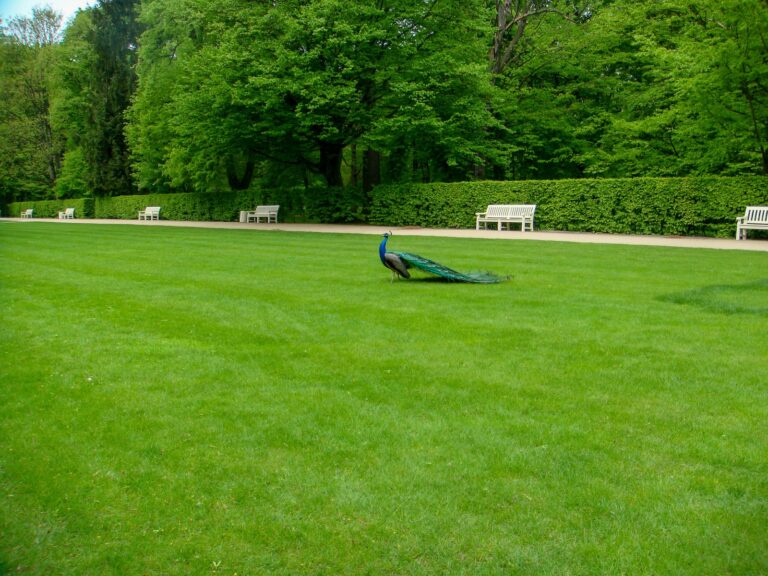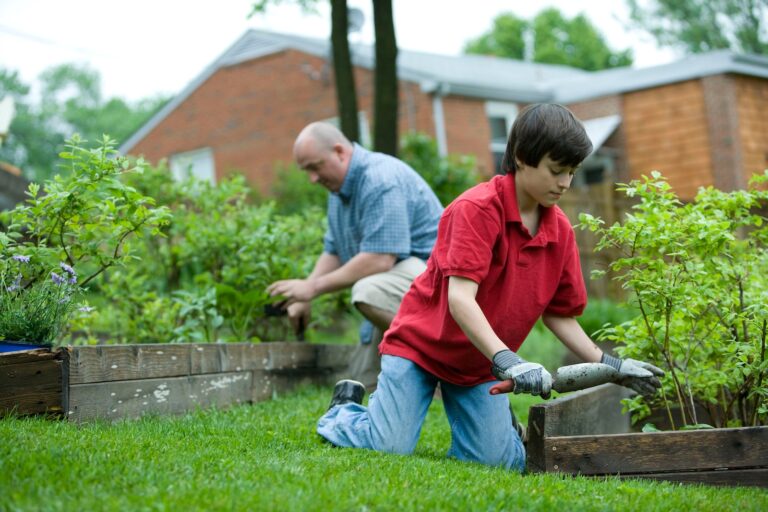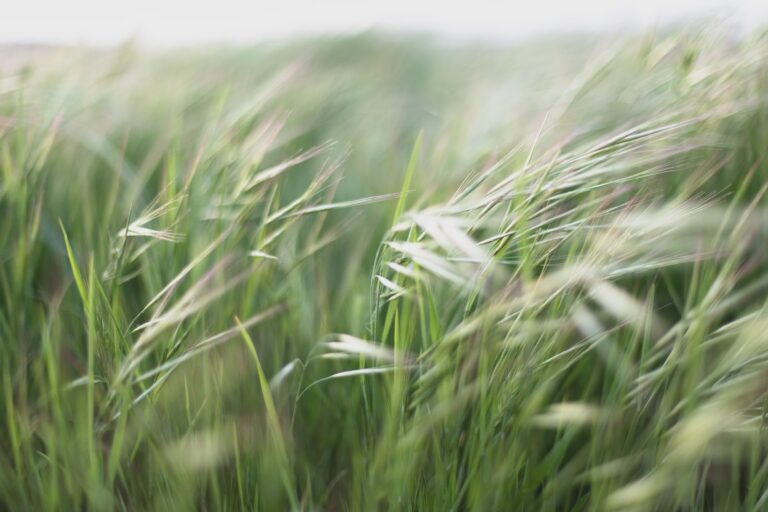How to Keep Your Lawn Green and Healthy All Year Round

Are you struggling to keep your lawn looking lush and green all year round? It can be difficult to maintain a vibrant lawn in the face of changing weather conditions, pests, and other challenges. However, with a little effort and some smart strategies, you can achieve the perfect lawn no matter what time of year it is!
In this blog post, we will explore some tried-and-true techniques for keeping your lawn healthy and beautiful every month of the year. From seasonal maintenance tips to innovative tools and techniques, we’ve got everything you need to become a master gardener in no time! So sit back, relax, and get ready to learn how to transform your backyard into an oasis of greenery that will make all your neighbors jealous.
Understanding Lawns: Basic Care, Maintenance, and Watering Requirements
Lawns are a key part of most homes’ landscaping, providing a green space for entertaining, relaxing, and other outdoor activities. But keeping a lawn healthy and looking its best takes some work. In this section, we’ll cover the basics of lawn care, including mowing, fertilizing, and watering.
Mowing: Mowing is one of the most important aspects of lawn care. It helps improve the look of your lawn by giving it a neater appearance and promoting growth. It also helps control weeds and pests. When mowing, be sure to use a sharp blade to avoid damaging the grass. Mow in a different direction each time to prevent ruts from forming in the turf.
Fertilizing: Fertilizing your lawn helps it stay green and healthy by providing nutrients that promote growth. Be sure to choose a fertilizer that’s appropriate for your type of grass and follow the directions on the package for best results.
Watering: Watering is essential for keeping your lawn healthy, but how much water you need depends on your climate and the type of grass you have. In general, most lawns need about 1 inch of water per week. Water early in the morning to reduce evaporation and minimize the risk of fungal diseases developing in damp conditions later in the day.
How to Prepare Your Lawn For Winter
As the weather cools and the days grow shorter, your lawn enters into its dormant season. Although your grass may look brown and dead, it’s actually just resting. With a little preparation, you can ensure that your lawn comes back healthy and green in the spring.
Fall is the best time to fertilize your lawn. A slow-release fertilizer will provide nutrients that will help your grass withstand the cold winter months. Be sure to follow the instructions on the fertilizer package, as too much fertilizer can actually damage your lawn.
You should also aerate your lawn in the fall to help improve drainage and prevent compaction. Aeration involves punching small holes in the soil to allow air and water to reach the roots of the grass. You can do this yourself with an aeration tool or hire a professional.
Make sure you mow your lawn one last time before winter really sets in. This will help prevent mold and mildew from growing on dead grass clippings. If possible, set your mower blades a little higher than usual so you don’t stress the grass too much as it enters dormancy.
Tips for Mowing and Edging
1] Mow your lawn regularly and at the proper height. Depending on the type of grass, you should mow it anywhere from 2 to 4 inches tall.
2] Use a sharp blade on your lawn mower. This will help ensure clean, even cuts on the grass.
3] Don’t scalp the lawn when you mow. Scalping means cutting the grass too short, which can damage the grass and make it more susceptible to disease and pests.
4] Edge your lawn regularly. This will give it a clean, manicured look and also help prevent weeds from encroaching onto your lawn.
5] Apply fertilizer and pest control products properly. Be sure to follow the instructions on the labels so that you don’t apply too much or too little of these products.
Fertilizing Strategies

Your lawn is a living thing, and like all living things, it needs regular care and attention to stay green and healthy. One of the most important things you can do for your lawn is to fertilize it regularly.
There are a few different fertilizing strategies that you can use to keep your lawn looking its best. The first is to fertilizer before the growing season begins. This will give your grass a boost of nutrients that it can use to grow strong and healthy through the spring and summer.
Another strategy is to fertilizer during the growing season. This will provide your grass with a steady supply of nutrients that it can use to stay green and healthy throughout the year.
You can also fertilizer after the growing season has ended. This will help replenish any nutrients that your grass has lost over the course of the year and prepare it for the next growing season.
No matter which strategy you choose, make sure to follow the directions on the fertilizer package carefully. Over-fertilizing your lawn can damage it, so it’s important to apply the fertilizer correctly.
Weed Control and Prevention

Weed control is a vital part of lawn care. Weeds can choke out your lawn, steal nutrients and moisture, and harbor pests and diseases. But with a little preventative care and some regular upkeep, you can keep your lawn green and healthy all year round.
Here are some tips for preventing and controlling weeds in your lawn:
-Mow regularly. Mowing your lawn on a regular basis helps to prevent weeds from taking root. It also makes it easier to spot and remove any existing weeds.
-Remove weeds by hand. If you see a weed, pull it up by the roots before it has a chance to spread.
-Use herbicides wisely. Herbicides can be effective at killing existing weeds and preventing new ones from growing. But be sure to read the label carefully and follow directions to avoid damaging your lawn.
-Fertilize regularly. A healthy lawn is less susceptible to weed invasion. Fertilizing your lawn regularly will help it stay strong and vigorous.
-Water deeply and evenly. Deep, infrequent watering encourages deep rooting, which makes your lawn more resistant to drought stress – one of the conditions that can make it more vulnerable to weed invasion .
Aeration Techniques
Aeration is one of the best things you can do for your lawn. It allows water, air and nutrients to reach the roots of your grass, which promotes a healthy lawn. There are two main types of aeration: core aeration and solid tine aeration.
Core aeration is when small plugs of soil are removed from the lawn. This type of aeration is best done in the spring or fall. Solid tine aeration is when small holes are punched into the lawn. This type of aeration can be done any time of year.
Aeration is a simple process, but it’s important to do it correctly. Follow these tips for the best results:
-Water your lawn the day before aerating. This will help the plugs come out easily.
-Use a garden hose to mark where you’ll be Aerating. This will help you stay on track and avoid damaging sprinkler heads or other objects in your lawn.
-Rent an aerator or hire a professional Lawn Care company to do it for you. Be sure to get one with adjustable settings so you can control how deep the plugs are removed from your lawn.
Alternatives to Traditional Lawn Care Methods
Lawn care methods have come a long way in recent years, and there are now many alternatives to the traditional methods that have been used for generations. These new methods are often more effective and less expensive, and they can help you keep your lawn green and healthy all year round.
One of the most popular alternative lawn care methods is aeration. Aeration involves using a machine to punch small holes in your lawn, which allows air, water, and nutrients to reach the roots of your grass. This can help your lawn to resist disease and pests, and it can also make it easier for your grass to grow.
Another popular method is top dressing. Top dressing involves adding a layer of organic matter to your lawn, which can help to improve its drainage and prevent compaction. It can also help to add essential nutrients to your soil.
If you live in an area with harsh winters, you may want to consider installing a covering over your lawn. This will protect your grass from the cold weather and allow it to stay green all year long.
There are many other alternative lawn care methods available, and you should talk to a professional Lawn Care Company about which ones would be best for your particular lawn. Remember that the key to keeping your lawn green and healthy all year round is to start early in the season and take preventive measures against problems before they start.
Conclusion
Keeping your lawn green and healthy throughout the year is a labor of love that can be rewarding in both aesthetic and practical terms. From proper watering to using balanced fertilizers, there are many steps you can take to ensure that your grass remains lush and vibrant all year long. Follow these tips today and watch as you transform your lawn into an outdoor oasis!

James is a passionate writer and gardener with years of experience in home gardening. He is the author of several articles and blog posts on HomeGardenBlog.com, a platform where he shares his expertise and love for plants and gardening with the world.







